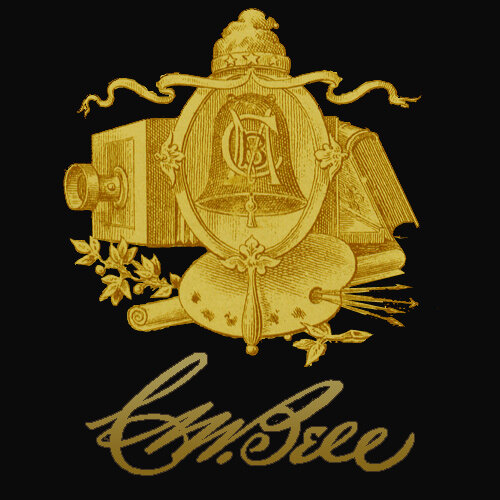
Annie Colley Bell, 1857 - 1932
. . . from the family materials of Colley W,. Bell (son of Charles Milton Bell)
On a cold, gray Halloween in 1932, in a modest house on College Point, Long Island, Annie Colley lay dying. She was 75 years old. The room was quiet, the stillness broken only by the hushed murmurs of family—her devoted son Colley, his wife Francis, and their three young boys, Colley Jr., George, and William. Outside, the wind moved across the Sound. Inside, Annie was slipping away from a life that had spanned wars, revolutions in technology, and the slow, steady reshaping of the nation itself.
She had been the wife of Charles Milton Bell, the Washington photographer whose studio bore his name and whose work preserved the faces of presidents and laborers alike. It was a time when the camera was still a wonder, when portraits were more than mementos—they were records, evidence of one’s place in time. Charles Bell had been one of the best. But Annie’s life was more than that of a photographer’s wife. It was marked by resilience, by the burdens of widowhood, and by the quiet strength of a woman who carried on.
In 1893, Charles returned from Fort Monroe, Virginia, damp and chilled, and within days had fallen gravely ill. He died at the Windsor Hotel in Washington. Annie was left alone, 36 years old, with two sons and the weight of the family business. She did not falter. Charles Jr. would pursue electrical engineering, while Colley, the younger, stayed close, entering the law and serving at the side of two Chief Justices of the United States—first Melville Fuller, and later Charles Evans Hughes.
Tragedy touched Colley, too. In 1910, he married Carl Bushby, the daughter of a respected Episcopal priest and teacher at the National Cathedral School. Carl was already ill with tuberculosis. Seven months later, she was gone. The loss left its mark, but it remained largely unspoken. Years later, Colley Jr., sorting through the contents of an old rolltop desk, discovered a small box, tucked deep in a drawer. Inside were Carl’s white gloves, a pair of shoes, bits of lace, and a few personal letters. They were relics not of fame or accomplishment, but of love and sorrow, and the bonds between a mother and son forged in grief.
The studio that bore Charles Bell’s name could not withstand the changing times. The great photography houses of Brady and Gardner had disappeared after the Civil War. By the turn of the century, George Eastman’s Kodak had introduced the Brownie camera, and with it, a revolution. Now, anyone could take a picture. The once-proud portrait studio, with its fragile glass negatives and painstaking compositions, was no longer essential. In 1900, Annie sold C.M. Bell Studios—name, inventory, and over 30,000 plates. The name would endure another decade, but the world that had once made it indispensable was gone.
For years, the legacy of C.M. Bell lay dormant, the glass plates boxed and shelved, surviving more by chance than design. Then, in one of history’s small mercies, they were rediscovered. Alexander Graham Bell—no relation—had acquired the negatives for the Smithsonian. There they remained, untouched, until curators at the Library of Congress began the painstaking process of cataloging and digitizing the collection. Thousands of faces emerged again—shopkeepers, congressmen, children, freedmen, farmers—glimpses of a country still defining itself.
Through it all, Annie’s quiet determination had preserved not only a business but a record of the American people. And now, a century later, her family carries that story forward—not as a sentimental artifact, but as a testament to endurance, and to the enduring power of images to connect past and present. The photographs live on. So does Annie.
Annie Colley
The Bell home of Annie’s son, Colley Bell (1920-1955) today near College Point, NY
Carl Busby and Colley Bell highlighted among friends in 1910. Colley married Carl eight months before her death. Carl was the daughter of Rev. William and Mary Bushby.




